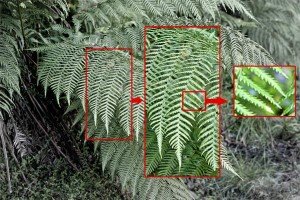Be More Creative — How Spending Time Outdoors Can Spur Creativity
Quite a few years ago I remember reading a book that discussed the effect that nature has on creativity. I can’t remember for sure, but I want to say that the book was “The Artist’s Way” by Julia Cameron. In the book, the author talked about how the patterns in nature create a unique resonance within the eye that helps to reduce stress and stimulate creativity.
It’s an idea that has stuck with me, and one that certainly rings true for me. Whenever I spend time outdoors I always notice that I return feeling more creative and inspired. I decided to take a closer look at the link between nature and creativity to learn more about the connection.
I actually found that there is quite a bit of research being done on the psychological effects of spending time outdoors. This research is largely prompted by the fact that kids today are spending more time indoors, attached to their devices. Texting, chatting and gaming have replaced activities like biking, hiking and camping. One study found that today’s children only engage in outdoor play or sports for an average of 15-25 minutes per day 1.
Adults are no better. Most of us spend our days tied to our computers, and then when we get home we bury our faces in our smartphones or plop down in front of the TV to lose ourselves in our favorite shows. Backyard barbecues and weekend camping trips have largely been replaced by time-eating gadgets and technology.
While these changes have a number of effects — both good and bad — one of the most interesting outcomes of being involved in a high-tech world is the impact that it has on our creativity. With so many tools at our fingertips it seems like technology would help us be more creative. However, in most cases just the opposite is true.
Studies have shown that spending time in nature away from your cell phone, gaming system or computer can dramatically improve your problem solving skills and can enhance creativity. It’s unclear whether these improvements come as a result of being disconnected from technology or being immersed in nature — it may even be a combination of the two.
The first study that supports the idea of nature nurturing creativity was done by Ruth Ann Atchley, an associate professor of cognitive/clinical psychology at the University of Kansas. Atchley’s study involved about 120 participants ranging in age from approximately 18-60.
The participants, who came from all different walks of life, had signed up to go on one of several different backpacking trips with Outward Bound. As part of the study, the participants were split into two random groups. The Remote Associates Test, a test commonly used to by psychologists to gauge creativity, was administered to each group.
The first group took the test before they began their hike, while the second group took the test after four days of being on the trail. The second group scored approximately 50% higher on the test than the first group. 2
It is unclear whether the improvement was caused by the fact that they were surrounded by nature, or by the fact that they had been disconnected from technology for four days.
Atchley speculates that nature has a positive effect on our brain’s ability to work at its full creative potential. “Nature is a place where our mind can rest, relax and let down those threat responses,” Atchley said in a press release. “Therefore, we have resources left over — to be creative, to be imaginative, to problem solve — that allow us to be better, happier people who engage in a more productive way with others.”
She refers to social media, cell phones and technology as “threats”, saying “”they sap our resources to do the fun thinking and cognition humans are capable of — things like creativity, or being kind and generous, along with our ability to feel good and be in a positive mood.”

Other studies have shown similar improvements in creativity after being exposed to nature. One of the theories is that the naturally occurring patterns found in the outdoors help our minds to relax. Mathematicians describe these patterns as fractals.
Fractals are somewhat of an abstract topic that can seem difficult to grasp. At their most basic level, however, they are simply repeating patterns that display identical or similar elements.
A good example of a naturally occurring fractal pattern is a fern leaf. Each frond of the fern splits off into smaller, similarly shaped leaves, which again break down into even smaller similarly shaped leaves, etc.
Other examples of fractals in nature include trees, leaves, snowflakes, crystals, clouds and ocean waves. Over the years, a number of studies have shown that being exposed to fractal patterns can reduce stress by as much as 60%. 3 This in turn can help your mind to relax and focus on creative pursuits.
Regardless of the reason why, there is strong evidence that disconnecting from technology and surrounding yourself with nature can help you maximize your creativity. The next time you are experiencing writers block or staring down a blank canvas with no idea where to start, try taking some time to connect with nature.
It can be as simple as taking a minute to look out the window at some nearby trees, or as involved as going on a week-long backpacking trip. Turn off all your gadgets and take time to appreciate the beauty of the world around you. By calming your mind and focusing on the amazingly intricate patterns of nature, you can tap into the well of creativity that lies within you.

One thought on “Be More Creative — How Spending Time Outdoors Can Spur Creativity”